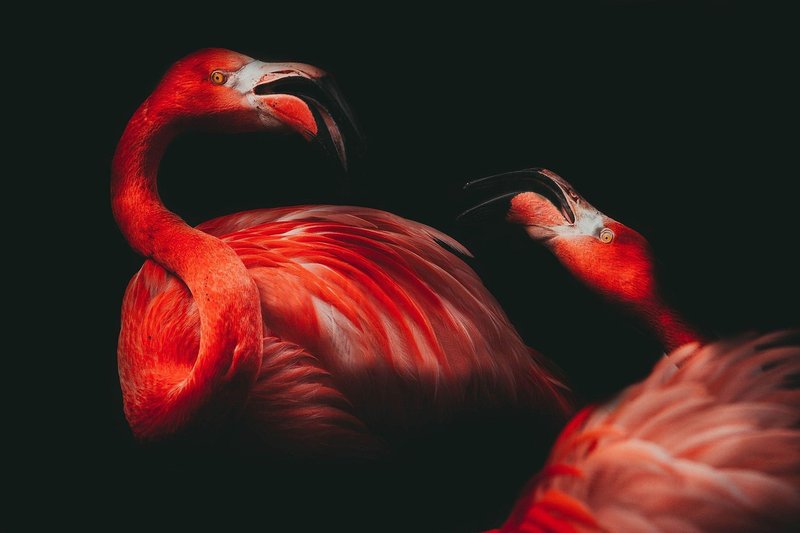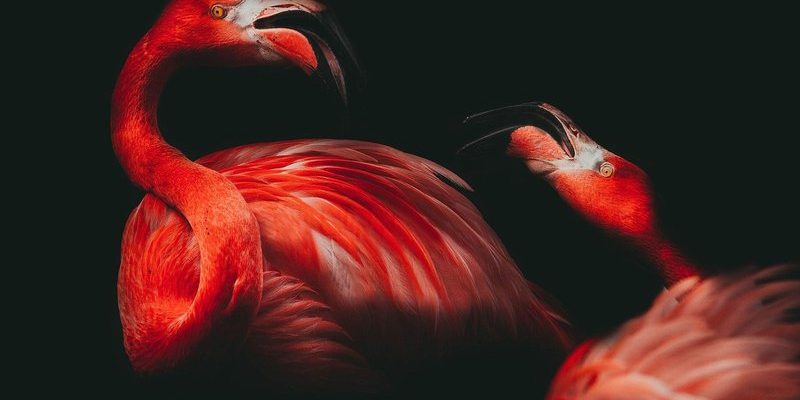
Flamingos are more than just pretty birds; they have fascinating behaviors, diets, and habitats. Understanding these differences can enhance your appreciation for wildlife and maybe even your next trip to a zoo or nature reserve. You might be surprised at what you learn about these birds and their cousins!
What Makes Flamingos Unique?
Flamingos are renowned for their striking pink feathers, but have you ever wondered why they’re that color? It all comes down to their diet! Flamingos primarily eat algae and small crustaceans, which contain pigments called carotenoids. These pigments are the same ones found in carrots and sweet potatoes. When flamingos consume these foods, their bodies convert the pigments, giving them their vibrant hue. The more they eat, the pinker they get!
Another unique aspect of flamingos is their long legs and necks. These adaptations help them wade into deeper waters to find their food. You could say they’re like the tall models of the bird world, perfectly designed for their environment. Their specialized beaks are also quirky, curving downwards to help them filter-feed in the water. That’s pretty cool, right?
Another interesting fact is their social behavior. Flamingos are highly social birds often found in large colonies. They engage in synchronized movements and elaborate courtship displays, making them a sight to behold in the wild. Their communal lifestyle is a big part of what makes them so special and different.
Flamingos vs. Herons: A Closer Look
When comparing flamingos to herons, the differences become even clearer. Herons are known for their long necks and sharp, pointed beaks, which are perfect for hunting fish. Unlike flamingos, herons are usually solitary creatures, often seen standing still in shallow waters, patiently waiting for their next meal.
Habitats are another area where flamingos and herons diverge. Flamingos prefer saline or alkaline lagoons and lakes, while herons are more adaptable, thriving in freshwater and saltwater environments alike. If you picture a heron, you might see it perched on a riverbank, striking a pose as it scans the water for fish. Flamingos, on the other hand, create beautiful scenes on lakes with their vibrant colors.
While both belong to different families within the bird kingdom, their feeding habits are quite different. Herons hunt actively, using their sharp beaks to snatch up fish and other prey. Flamingos, as discussed, are filter feeders, using their specialized beaks to sift through muddy water for food. It’s like the difference between a chef preparing an elaborate meal and someone enjoying a buffet!
The Similarities with Spoonbills
Now, let’s chat about another bird that bears a resemblance to flamingos: the spoonbill. Spoonbills, like flamingos, have long legs and specialized beaks. However, their beaks are distinctly shaped like spoons. This unique feature is handy for foraging in shallow waters, where they sweep their beaks side to side to collect food.
Both spoonbills and flamingos thrive in similar habitats, often found in wetlands and marshes. Yet, while flamingos are pink, spoonbills are typically white or have a slight pink tint. It’s like comparing two paintings—both beautiful but with different color palettes and techniques. Their social behavior is somewhat similar, too; both birds often gather in groups, creating stunning flocks that catch the eye of any nature lover.
Dietary habits also show differences between the two. Spoonbills primarily eat small fish and crustaceans. Flamingos thrive on algae and brine flies. While they share some habitat and social traits, their food choices highlight how diverse the bird world is!
Comparing Flamingos and Pelicans
Let’s switch gears a bit and look at pelicans, another interesting cousin of the flamingo. While flamingos are elegant and tall, pelicans are known for their large bodies and unique, long beaks that can scoop up fish in their pouches. This design is perfect for catching fish, making them quite different from flamingos, who primarily rely on filtering algae from the water.
Both flamingos and pelicans are social, often seen in groups, but they usually inhabit different environments. Pelicans tend to prefer coastal areas, lakes, and rivers, while flamingos favor saltwater lagoons and alkaline lakes. If flamingos are the dancers of the bird world, then pelicans are more like swimmers, gliding across the water effortlessly.
Another notable difference lies in their breeding habits. Flamingos build nests that float on the water, using mud and vegetation, while pelicans make nests on the ground or in trees. Their parenting styles are also different: flamingos often raise their young in large colonies, whereas pelicans may be more solitary in their nesting techniques.
Understanding the Differences in Behavior
Behaviorally, flamingos and their similar species also exhibit distinct traits. For instance, flamingos often perform synchronized displays during courtship, where they engage in elaborate dances and calls. This bonding ritual is crucial for attracting mates and maintaining social structures within their flocks.
On the flip side, herons and pelicans are less theatrical in their mating rituals. Herons are known for their more solitary and cautious behavior, while pelicans boast cooperative fishing strategies, where they work together to herd fish into shallow water.
Flamingos also exhibit a unique communal behavior, known as *lekking*, where males display their plumage to attract females. This is reminiscent of a talent show but in the bird kingdom! You might even see hundreds of flamingos performing the same movements at once, creating a stunning spectacle in their natural habitat.
Conservation and Habitat Concerns
As we explore the differences between flamingos and their avian relatives, it’s essential to touch on conservation issues. Flamingos face threats from habitat loss due to pollution and development. Their specialized habitats, such as wetlands and lagoons, are increasingly at risk, impacting their populations. It’s vital to raise awareness about these challenges to protect these magnificent birds.
Similarly, other bird relatives like herons and pelicans also contend with habitat degradation. Protecting their ecosystems is not only crucial for flamingos but for the entire avian community. If these environments disappear, we risk losing the breathtaking sights of colorful flamingos and their cousins.
Many organizations are working tirelessly to create reserves and advocacy programs that raise awareness and encourage conservation efforts. Supporting these initiatives is a great way to help ensure that future generations can enjoy the beauty of these birds.
Final Thoughts on Flamingos and Their Relatives
Flamingos are undeniably unique, with their pink plumage, long legs, and fascinating feeding habits. Understanding their differences from similar species like herons, spoonbills, and pelicans deepens our appreciation for these creatures. Each bird has its charm and uniqueness, painting a colorful picture of the avian world.
As you journey into nature or visit a local zoo, take a moment to observe these birds and appreciate their distinct traits. You might find yourself seeing them in a whole new light. Whether it’s the elegant dance of a flamingo or the patient stance of a heron, each moment can offer a glimpse into the wonderful complexities of the natural world.
Embrace the beauty of birds around you, and remember how their differences make our planet all the more fascinating!

